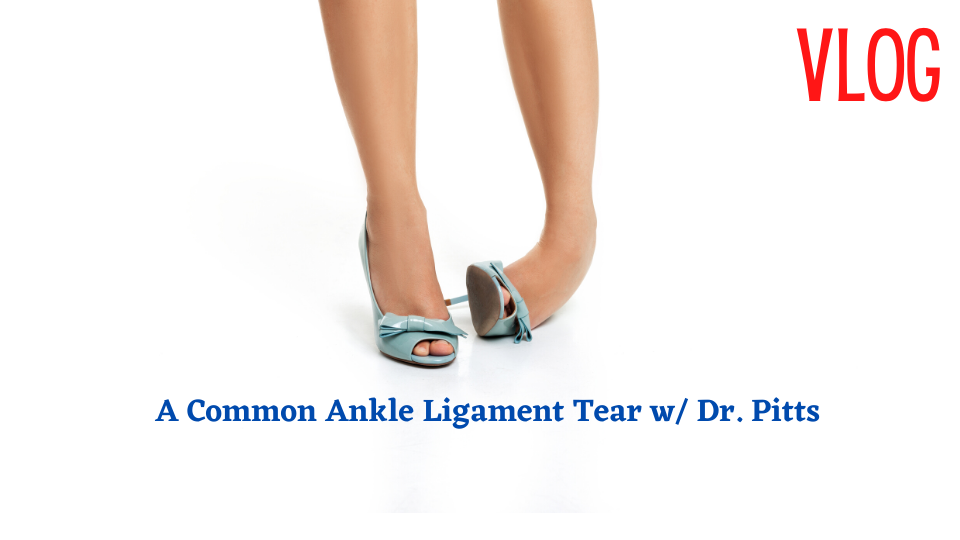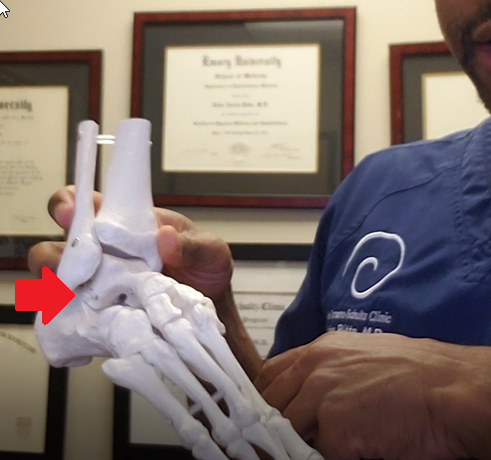Transcript
Hi, everybody. This is Dr. John Pitts from Centeno-Schultz Clinic.
Today, I like to talk about a torn ankle ligament. So what is a torn ankle ligament? How can you treat it? What problems can it cause?
So I think any of us that have played sports at all, have had that ankle sprain where you, kind of, twist that ankle. You may have a mild injury. You may have a little bit of pain and some swelling; you ice it, maybe take some anti-inflammatory medicines, elevate it — all the typical things. And, you know, most of time, it will go away. But sometimes you have one that’s a little bit more severe, where you’re really worried about it, and you think there’s a bigger problem going on.
So, in some cases, you can actually tear one of the ankle ligaments. There are several ankle ligaments and I’ll show on a model what we’re talking about. So ligaments just in general connect bones to bones. And so they’re like strong pieces of rope, or duct tape, that allow a tiny bit of movement between the bones but prevent it from moving too much.
And so the most common ligaments that get sprained in the ankle are here on our model, on the outside.
So, if this is the front of our foot, this is our main ankle joint. The little bone’s on the outside part of the ankle, there’s a ligament that attaches two little bone across to this bone here, and there are other ligaments that attach it down here, and up here and even in the back here. These, we say, are the lateral ankle ligaments.
Inversion Injury & The Lateral Ankle Ligaments
And most commonly you have what’s called an inversion injury, where the ankle rolls inwards. So, you step on something – someone’s foot, landing off a jump, off a curb, hiking on some uneven terrain, playing basketball, playing soccer or anything, and it twists like this.
And it can injure that ligament. So if it’s a mild sprain of the ligament, you’re probably going to have that mild scenario, where you’re in pain, it’s swelling, and sore for a few days. You’re hobbling around, and, then, after a few weeks, it’s probably back to normal.
You know, sometimes you can have a bigger tear where the whole ligament isn’t torn, but there are big tears. And it may just, you know, get somewhat better, but you still have some problems, on and off. And if you never get it looked at, it can persist over years. And then even bigger problems where you tear that ligament completely. You may wind up in a doctor’s office saying, “Hey, I’ve had this big injury, I’m worried about it,” or “I tried to do conservative things and can’t get it better.”
And, so all these type of ankle injuries partially can heal on their own. But a majority of the time, when you have these ankle injuries, especially a few of them, you have persistent instability over years. So, for example, myself, I play a lot of sports. I had tons of ankle sprains when I was younger. And I realized, when I was coming to Colorado, just doing the easy hikes, you know, it would be easy for me to twist my ankle, have a little bit of pain and discomfort. It was nothing major, but it was quite annoying.
Treatment Options for a Lateral Ankle Ligament Tear
And so I’ll tell you, what I did to help my ankles out, and what we do for our patients. And so the treatment options, you know, first step, if you have a mild ankle sprain — rest ice, elevate all those things. The next thing is physical therapy, which can help to strengthen the muscles around the ankle and help what, we say is neuromuscular control, which is basically just trying to retrain your ankle and brain to talk with each other, so it’s not so susceptible to get it twisted.
And then if those things don’t work, traditionally all you had was surgery. So if you had one of those bigger ankle sprains, they would try to surgically reconnect those ligaments, which, you know, could potentially be helpful, but also comes with more risk and more risk for maybe more ankle stiffness, but can’t help to make the ankle more stable. But for most of these ankle sprains, which are kind of in the middle, we can help those out with regenerative therapies.
So, one treatment option is prolotherapy, which is basically a sugar-water solution, which creates a little bit of local tissue inflammation that triggers a healing response. And it works really well to help strengthen ligaments up. Typically, you need two to four injections spaced out over a few weeks to really get those ligaments to heal up. The next option would be PRP, or platelet-rich plasma. I’ve had both prolotherapy and PRP applied to my ankles and, ever since having that treated, I haven’t had any sprains since then.
So if you or anyone you know, has problems with an ankle ligament tear or ankle instability or chronic ankle sprains, let us know here at the Centeno-Schultz Clinic. We specialize in treating these types of problems every day.
I’ve had my ankles treated in a similar fashion for those ankle ligament tears and its been doing great. Thank you. Have a good day!


